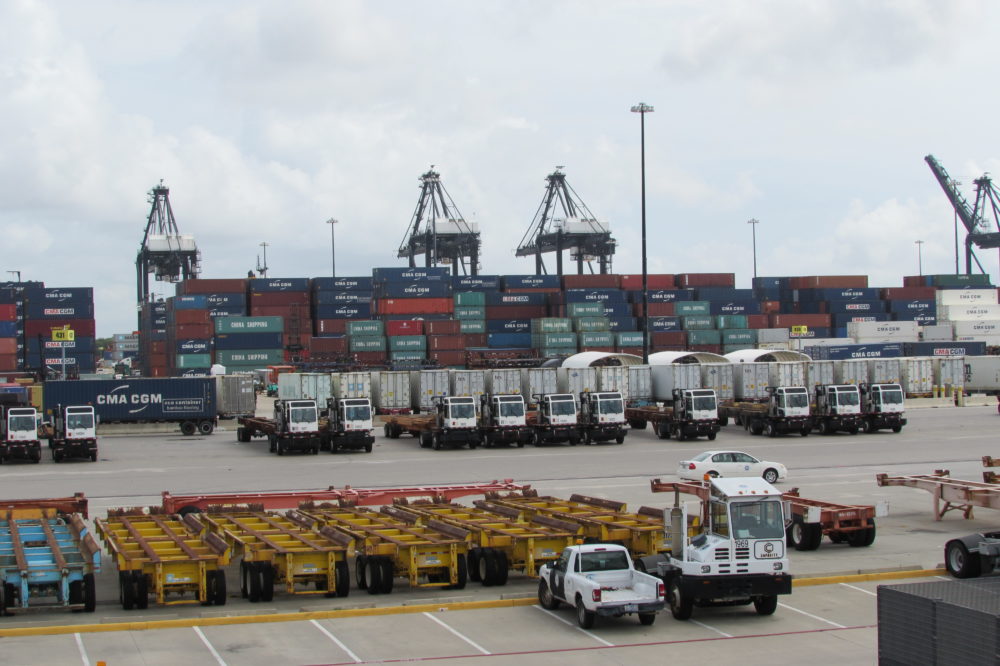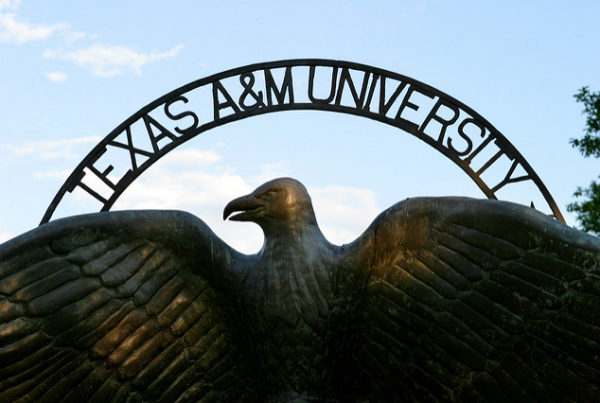There’s not a lot of down time at the Port of Houston as a steady stream of traffic rumbles in and out of the Bayport Container Terminal.
Coming into the port are ships from all over the globe, carrying things like clothing, consumer goods, and food and beverages. When those ships leave, they’re often carrying plastic resins, generated by Houston’s petrochemical industry.
Showing us around is Ryan Mariacher, who oversees the port’s container terminals. He says their big focus right now is getting ready for those giant post-Panamax ships. That’s what they’re calling the new bigger vessels that have about three times the capacity.
 Gail Delaughter | Houston Public Media
Gail Delaughter | Houston Public MediaThe port has spent millions on new container cranes that tower almost 30 stories. They also had to dredge channels to a depth of 45 feet, about five feet deeper than before.
In total, the port is planning about a billion dollars in improvements to lure those new ships.
“Realistically, competition is every other port in the United States,” says Mariacher. “You talk about other gulf coast ports obviously, but also east coast and west coast ports. And we’re constantly vying for the same business.”
One thing the port is trying to do is convince Asian shippers to come through the Panama Canal to Houston, instead of sailing directly to the west coast.
Port of Houston’s Chief Commercial Officer Ricky Kunz says one of their selling points is that Houston doesn’t have the labor strikes like the ones that shut down California ports.
As for logistics, Kunz says a longer trip by water could make the process more efficient. Houston is one of the country’s largest metropolitan areas, and lots of companies have set up distribution centers to serve a growing population.
But what does this expected port activity mean for the average Houstonian? Maria Burns directs the Center for Logistics and Transportation Policy at the University of Houston. She says jobs.
 Gail Delaughter | Houston Public Media
Gail Delaughter | Houston Public Media“For every single person that works by the sea, by the dock, there are eight people in the transportation, logistics, warehousing, and the entire supply chain that have to support that movement,” says Burns.
But Houston does face challenges in supporting that movement, and Burns says that includes infrastructure outside the port. Despite all those railroad tracks that crisscross the city, Houston is primarily a truck port, and the city has interstates that can take them in all directions.
But how do you get those vehicles through rush hour traffic? And how can shippers get more of their cargo onto trains?
Burns says there also needs to be a strong educational component to ensure Houston has a ready workforce.
“Nobody tells students that anything that makes any kind of logical sequence would help you learn more about the supply chain,” adds Burns. “Anything from business, being an entrepreneur, being a leader, could also help you learn things about the supply chain, and also trade, transportation mode, and technologies. They also blend together so well.”
The first post-Panamax ship is set to pass through the Panama Canal Sunday, June 26th.
Port officials say they don’t know yet when the first ship will come through the canal to Houston. But they say they do expect business from those ships to start picking up in 2017.
















